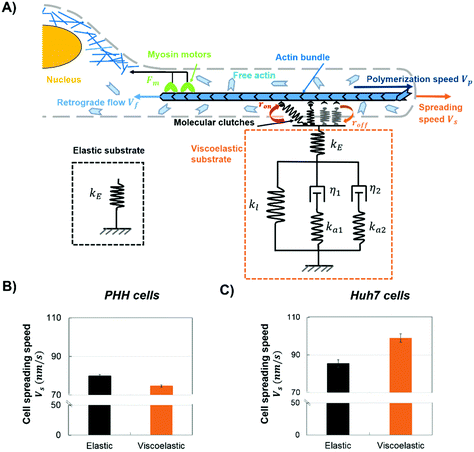 Open Access Article
Open Access ArticleCreative Commons Attribution 3.0 Unported Licence
Correction: Opposite responses of normal hepatocytes and hepatocellular carcinoma cells to substrate viscoelasticity
Kalpana
Mandal
*a,
Ze
Gong
b,
Alexis
Rylander
a,
Vivek B.
Shenoy
b and
Paul A.
Janmey
*a
aInstitute for Medicine and Engineering, University of Pennsylvania, Philadelphia 19104, USA. E-mail: mandalk@pennmedicine.upenn.edu; janmey@pennmedicine.upenn.edu
bDepartment of Mechanical Engineering and Applied Mechanics, University of Pennsylvania, Philadelphia 19104, USA
First published on 10th March 2020
Abstract
Correction for ‘Opposite responses of normal hepatocytes and hepatocellular carcinoma cells to substrate viscoelasticity’ by Kalpana Mandal et al., Biomater. Sci., 2020, 8, 1316–1328.
After publication, the authors found an error in Fig. 5(b and c) in the main paper. The corrected Fig. 5 is shown below.
The Royal Society of Chemistry apologises for these errors and any consequent inconvenience to authors and readers.
| This journal is © The Royal Society of Chemistry 2020 |


